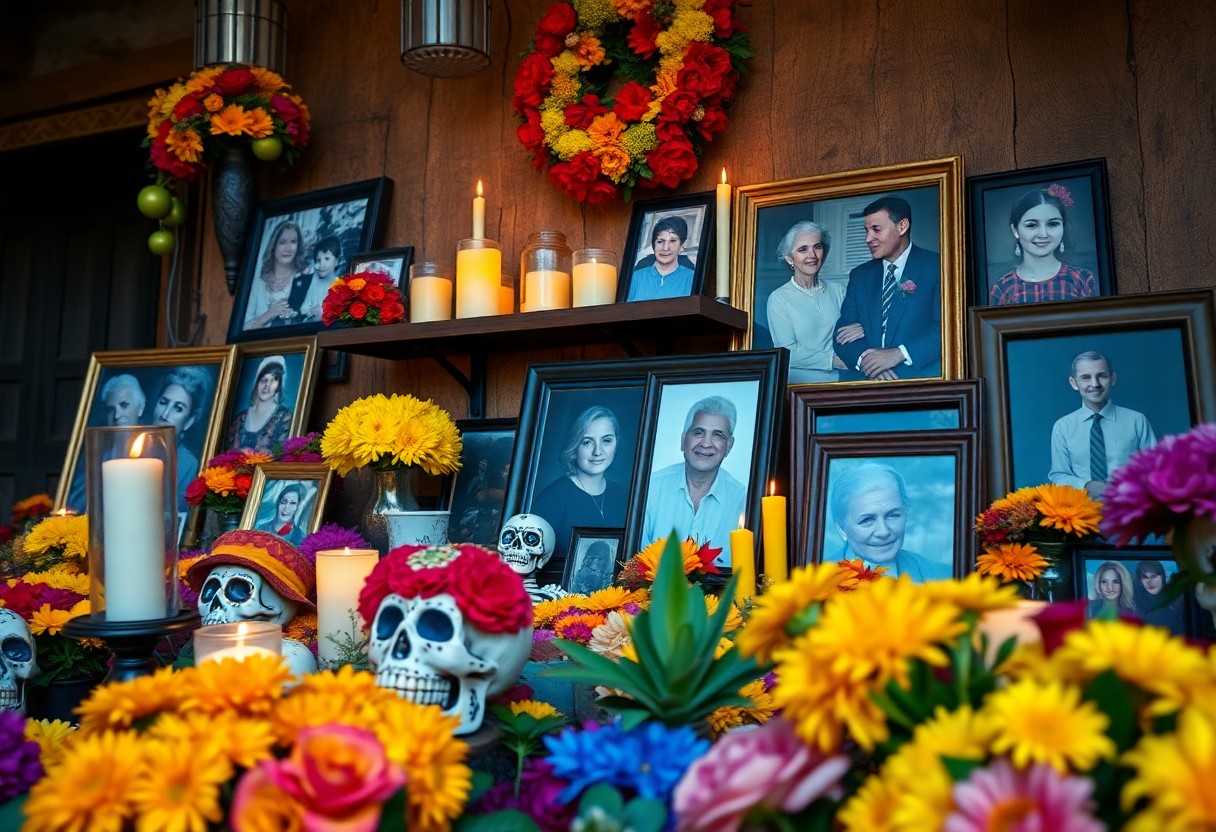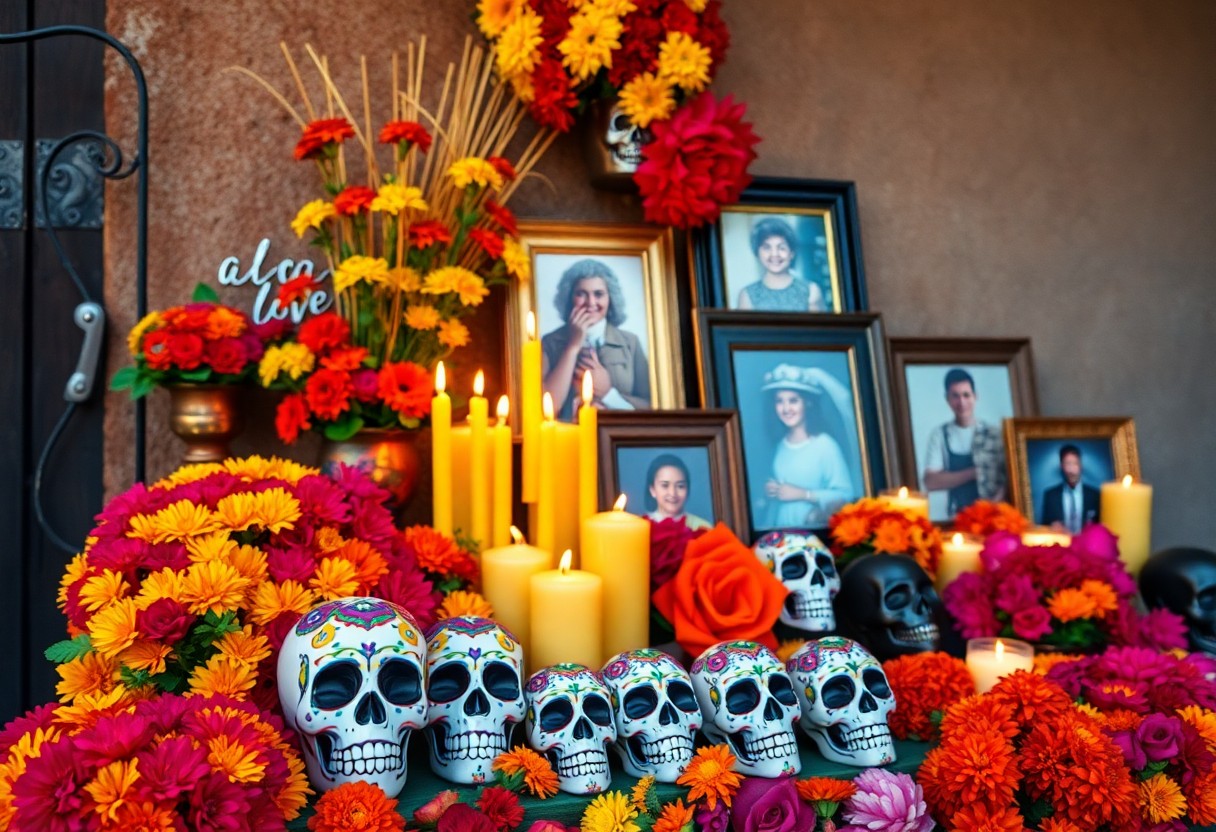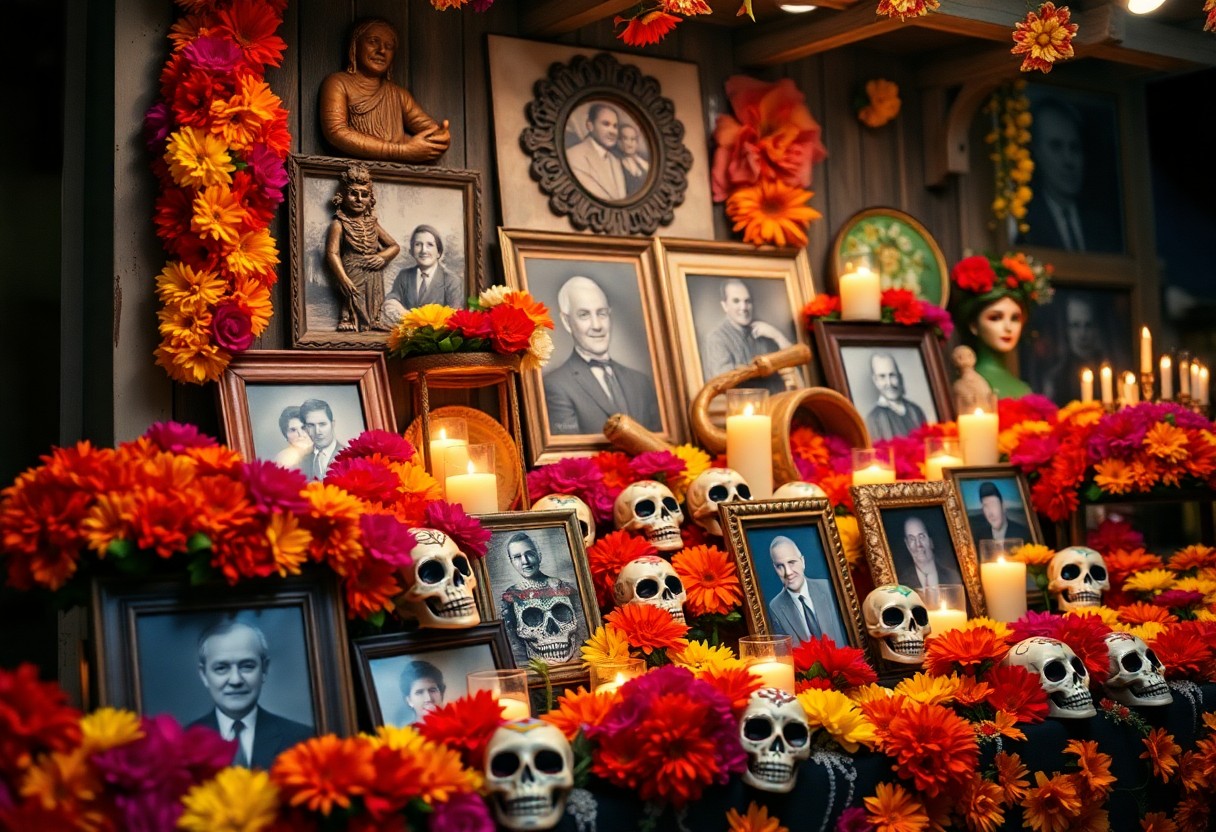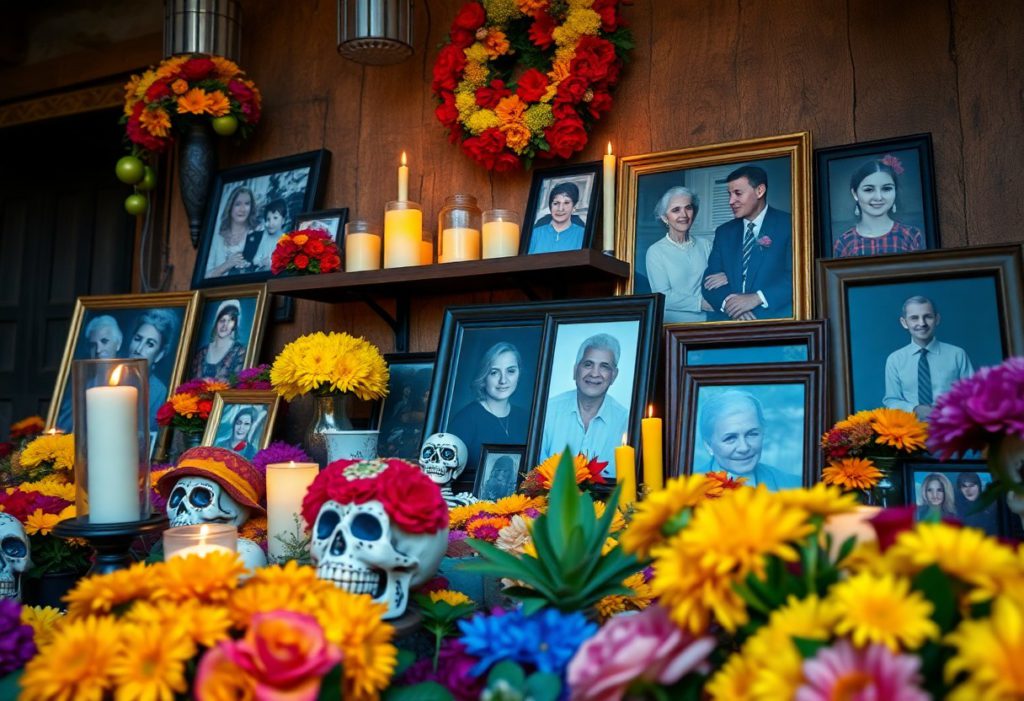During the vibrant celebration of Día de Muertos in San Miguel de Allende, the ofrenda, or altar, becomes a stunning and heartfelt centerpiece of remembrance. These altars are adorned with marigold flowers, flickering candles, and cherished photographs of those who have passed away, each carefully chosen to honor and celebrate the memories of loved ones while guiding their spirits back to the realm of the living. This historic city beautifully weaves together indigenous roots with modern artistic expression, resulting in a distinctive way to engage with and appreciate Mexican culture. Discover how these altars not only commemorate life and death but also showcase the unbreakable bonds of family in one of Mexico’s most captivating destinations.

Delve into the Rich Cultural Significance of Ofrendas in Mexican Traditions
The ofrenda, often viewed merely as a simple altar, encapsulates profound cultural and spiritual significance deeply embedded in Mexican traditions. This sacred space is meticulously created to pay tribute to those we have lost, grounded in the belief that their spirits return during Día de Muertos to relish the offerings lovingly prepared by their families. These altars are typically embellished with marigold flowers, candles, incense, and favorite foods of the departed, symbolizing love, remembrance, and the intricate connection between life and death. In San Miguel de Allende, the ofrenda emerges as a dynamic centerpiece of the festivities, showcasing the city’s rich cultural heritage and the enduring ties that connect the living to their ancestors, reinforcing the importance of memory and family bonds.

Uncover the Historical Origins of the Ofrenda Tradition in Mexico
The tradition of the ofrenda is steeped in ancient history, tracing its roots back to pre-Hispanic civilizations such as the Aztecs, who honored their deceased through elaborate rituals and offerings. With the arrival of the Spanish, Catholic practices were skillfully integrated with indigenous customs, culminating in the vibrant Día de Muertos celebration we recognize today. Presently, the ofrenda stands as a powerful symbol uniting the realms of life and death, embodying the belief that the spirits of the departed return to visit the living during this sacred time. In San Miguel de Allende, this cherished tradition thrives, providing visitors with an extraordinary opportunity to witness a rich cultural fusion that has endured through time, illustrating the resilience and adaptability of Mexican culture.
Experience the Evolution of the Ofrenda: A Journey Through Time
Historically, ofrendas were modest altars established in homes or cemeteries, reflecting regional traditions and individual familial customs. As time has progressed, the ofrenda has evolved, adapting to modern influences while preserving its core purpose of honoring the deceased. In San Miguel de Allende, contemporary altars now seamlessly blend traditional elements, such as marigolds and candles, with innovative art and design, showcasing the community’s remarkable creativity. Despite these transformations, the ofrenda remains a powerful symbol of the bond between the living and the deceased. This evolution highlights the resilience of Mexican culture, ensuring that this cherished tradition continues to thrive in both personal spaces and public gatherings, captivating all who experience it.

Discover the Essential Components of a Traditional Day of the Dead Altar
A traditional Day of the Dead altar is defined by several key components, each holding profound meaning. Photographs of the deceased serve as poignant tributes to their memory, while cempasúchil (marigold flowers) guide their spirits with their vibrant colors and captivating fragrance. Candles illuminate the path for souls, and incense (copal) purifies the sacred space. Visitors will often find food and beverages, such as pan de muerto and tequila, thoughtfully prepared to nourish the returning spirits. Salt symbolizes purification, while sugar skulls represent the cyclical nature of life. Additionally, papel picado adds a festive touch, serving as a reminder of life’s fragility. In San Miguel de Allende, these elements harmoniously converge to create altars that are both deeply personal and rich in cultural significance, inviting reflection and connection.
Explore the Best Locations to Experience Ofrendas in San Miguel de Allende
If you’re eager to immerse yourself in the vibrant spirit of Día de Muertos, San Miguel de Allende features some of the most breathtaking ofrendas. Start your journey at the Jardín Principal, where public altars and lively performances breathe life into this cherished tradition. Delve into local art galleries and cultural hotspots like Casa de la Cultura and La Aurora, where artists creatively merge traditional and contemporary elements in their displays. These venues not only highlight the city’s rich cultural tapestry but also ensure your visit is an unforgettable experience filled with creativity and community spirit. Make plans to explore these altars and immerse yourself in the heart of this beloved Mexican celebration, where every corner reveals something new and meaningful.
Engage with the Heartfelt Tradition of Día de Muertos!
Undoubtedly, the Day of the Dead celebrations in San Miguel de Allende provide a unique opportunity to engage with a time-honored tradition. By visiting the city’s vibrant ofrendas, you actively participate in a celebration that intertwines indigenous roots with Catholic influences, creating a powerful homage to both life and death. The altars, adorned with marigolds, candles, and pan de muerto, invite deep reflection on the beauty of memories and the lasting connections between the living and the departed. Embrace this tradition to experience the deeply felt spirit of Mexican culture firsthand and honor the lives of those who have come before, fostering a connection that transcends time.
Essential Insights About Día de Muertos and Ofrendas
Ultimately, the Day of the Dead ofrenda in San Miguel de Allende offers a profound means to connect with Mexican heritage and celebrate the vibrancy of life itself. By visiting the city during this significant time, you will witness stunning altars adorned with marigolds, candles, and personal keepsakes, each telling a unique story of love and remembrance. The streets and plazas of San Miguel de Allende transform into a living tribute to this cultural legacy, inviting you to experience the beauty of honoring the past while celebrating the present. This heartfelt celebration serves as a poignant reminder of the enduring bond between the living and the departed, enriching your understanding of life and community.
Your Questions Answered About Día de Muertos in San Miguel de Allende
What role does the ofrenda play during Día de Muertos in San Miguel de Allende?
The ofrenda is a central element of the Día de Muertos celebration in San Miguel de Allende, serving as a heartfelt way to honor and remember loved ones who have passed away. Families create these altars filled with offerings such as food, drinks, and treasured photographs to warmly welcome the spirits of the deceased. Symbolizing the connection between life and death, the ofrenda beautifully fuses indigenous traditions with Catholic elements, reflecting the cultural richness and deep spiritual heritage of the region.
What essential items are typically found on a Day of the Dead altar in San Miguel de Allende?
A traditional Day of the Dead altar in San Miguel de Allende is characterized by several essential elements. These include photographs of the deceased, vibrant marigold flowers (cempasúchil), flickering candles, fragrant incense (copal), traditional foods like pan de muerto, salt, sugar skulls (calaveras), and decorative papel picado. Each item carries substantial symbolic meaning, whether it’s guiding spirits, purifying the altar space, or representing the cyclical nature of life and death, creating a rich tapestry of remembrance and honor.
Where can visitors explore Day of the Dead altars in San Miguel de Allende?
Visitors can discover Day of the Dead altars at various prominent locations throughout San Miguel de Allende. Key sites include the bustling Jardín Principal, where public ofrendas and engaging performances take place, as well as local art galleries, Casa de la Cultura, and La Aurora, an esteemed art and design center. These venues showcase both traditional and modern altars, offering an enriching cultural experience during this vibrant celebration that highlights the creativity and spirit of the community.
The Article: The Day of the Dead Ofrenda: Honoring Tradition and Celebrating Life in San Miguel de Allende appeared first on https://fallinginlovewithsanmiguel.com/
The Article Ofrenda for Day of the Dead: Celebrating Life in San Miguel Was Found On https://limitsofstrategy.com


